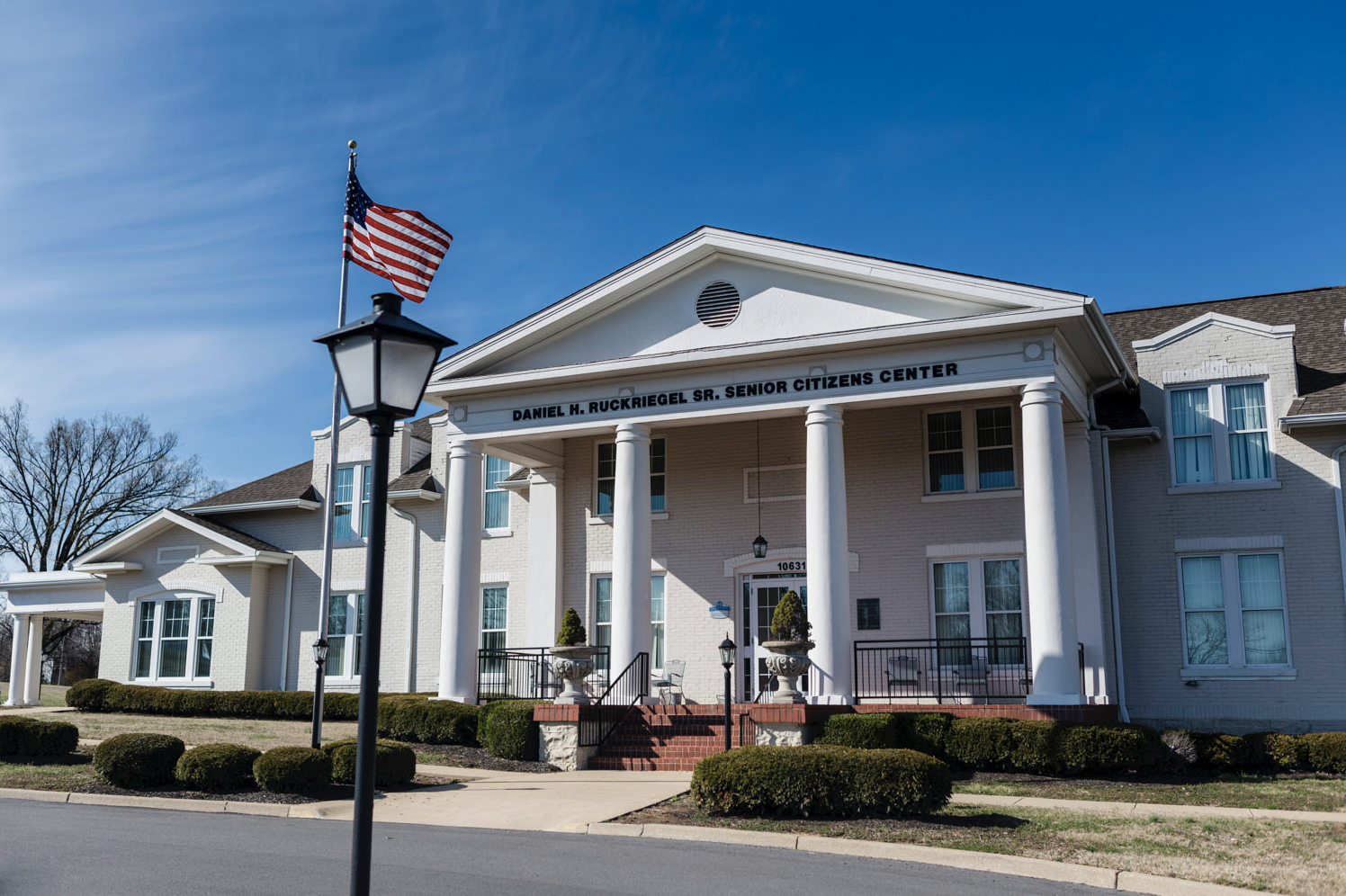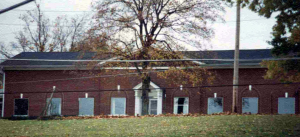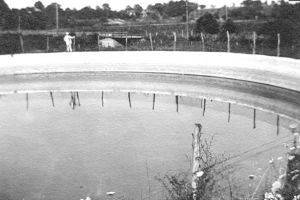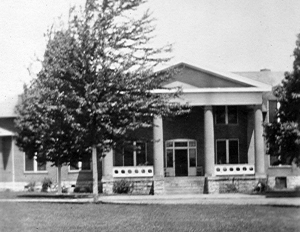Writer / Beth Wilder, Director Jeffersontown Historical Museum
According to the Merriam-Webster dictionary, a “poor farm” is “a farm maintained at public expense for the support and employment of needy persons.” The first known use of the word was in 1852, and in 1857, Jefferson County established an 80-acre poor farm, or Almshouse, on a hill just beyond the city limits of Jeffersontown, where the Jeffersontown Senior Center, Library, Museum, Gyms and Skyview Park are now located. The acreage of the poor farm had originally belonged to Henry Frederick. At that time, only a one-story, one-room log house stood on the property, but other buildings were added as necessary. The property was purchased because it sat in almost the exact center of Jefferson County, so it was in a position to more easily serve the needs of the entire county.
A March 11, 1894 Courier-Journal article paints a vivid picture of the site, as one left the limits of Jeffersontown’s square to approach the poor farm:
Just at the edge of the town a red gate fastened with an old-time iron chain latch comes into view. As you get down to open it a dozen small children surround you, and one of them inquires, “What’s yo’ name?” Then the gate is closed again and you are on poorhouse property. The poorhouse is easily seen by this time, for no trees obstruct the view: The long grass-covered hill slopes prettily to the group of buildings, for the poorhouse is not just one building but many.
The Superintendent’s house hides most of the others because it is the largest of the collection. It is a two-story frame country home, neatly painted and furnished. The buildings in which the paupers of the county live are built in a circle, quite like a stockade. All are one-story and frame. To the right are the quarters of the white men. In the center, the colored men live, and the white women are in the house on the left. Farther to the left is a small house where the insane are kept. These houses are all plainly constructed, and each building looks like a shanty boat set out on the land. In the center of this circle or stockade are the outhouses, the well, the kitchen and ground for recreation. The farm of 80 acres, which belongs to the property, is around this collection of buildings.
When that article was written, there were 21 paupers inhabiting the poor farm. Back then, the elderly were typically cared for by their families, but some widows and widowers had no one else left to tend them, and so they ended up at the poor farm instead. One resident, a 108-year-old woman named Mrs. Hannah Hardy (whose pioneer family had experienced Indian attacks in the area in the late 1700s) ended up moving in with a Jeffersontown family who could give her more attention, as she had been blind for 10 years, and her age rendered her totally unable to care for herself — staff could not be provided to give her the round the clock care she needed. In 1908, the Louisville Times remarked that, “indeed, the inmates are treated more like they were a part of a great family.”
The January 6, 1910 issue of The Jeffersonian noted that Henry Watterson’s daughter had taken time to visit the poor farm residents to inquire what they would like for Christmas. She jotted the inmates’ names and requests in a notebook, then made certain that each resident received the present he or she had hoped for, as well as oranges, apples and candy.
Poor farm residents were all fed and clothed “plainly.” If they were able, the men were expected to work the farm, although it seems that at any given time, the occupants were primarily very aged people. The farm itself was not situated on the most productive land, although the tillable area provided corn and other grain for the stock and vegetables for the inmates.
The poor house was supported by a special county tax of three cents on every hundred dollars, and had a Board of Commissioners, which was first assembled on November 20, 1857. The officers of the poor farm included a superintendent, physician and a “keeper of the lunatics.” The mentally unstable residents were kept there by an early act of the Legislature that required the Judge of the County Court to send them there.
By 1902, the Courier-Journal was making it known that the poor house could have been held to a higher standard regarding sanitary conditions, ventilation, presentation and cheerfulness of its inhabitants. The June 18, 1911 Courier-Journal declared that “Grand Juries Pronounce Poor House a Disgrace to Jefferson County,” and that “it requires only a visit to know that the county in which the metropolis of the State has station maintains the poorest, least charitable almshouse in progressive territory.”
That being said, the superintendent at the time, C.C. Tucker, was known to be a kind, affable, hard-working man, and his wife took such excellent care of the inmates “that they actually want to stay there in spite of accommodations.” Even the superintendent and his wife lived in a shack at the time, while the typical one-room, whitewashed cabins each had simply a chair, a bed or two, and a dilapidated old stove. The newspaper stated that the only building in good condition at the time was the cow barn.
In 1911, it was decided to build a new $24,000 poor house. Although there had been some talk about relocating the poor farm at that time — primarily due to concern about the lack of fresh water for the inmates — local citizens asserted there was plenty of pure water and that they felt Jeffersontown was “the most healthful community in the county,” and had the most “hospitable people who look after the comforts of the poor, unfortunate inmates.”
Since Jeffersontown was the only place that had expressed a desire to house the institution, the County Court decided to leave it there and erect a new building.
Construction began on the new poor house building in 1913. Brinton B. Davis, architect of the Jefferson County Armory (Louisville Gardens) and the Kentucky Home Life Insurance Building in downtown Louisville, was enlisted to design the structure. The new two-story Colonial Revival-style red brick building with white columns was dubbed “Colonial Manor” and housed the white women on one side, and the white men on the other — this building has since been renovated and is now the Jeffersontown Senior Citizens Center. A separate one-story facility was constructed a little further down Bluebird Lane, for the Black residents of the poor farm — that building later became Sunshine Lodge (a temporary shelter for displaced children), then the headquarters of the Jeffersontown Police Department, before it was razed to make way for the David L. Armstrong Recreation Center.
Many residents of Jeffersontown still recall the reservoir for the poor house as well. It looked like a large above-ground pool near the corner of Bluebird Lane and Grand Avenue, on land currently occupied by the Jeffersontown Public Works Department.
The poor farm did not remain very long after the new set of buildings was constructed. It closed in 1920, but the building later served as the County Home for the Aged and the County Recreation Department, before being utilized as the Jeffersontown Branch of the Louisville Free Public Library, then ultimately made over into the Jeffersontown Senior Citizens Center, which became a nationwide model for Senior Centers. Throughout its long history, the area that comprised the Jefferson County Poor Farm has been of great historical value to Jeffersontown.
The local residents were proud to have the Almshouse in their midst, and later, when the Home for the Aged and Sunshine Lodge were around, Jeffersontown inhabitants were all too eager to provide their time, company and supplies to these institutions. When each closed, the residents of Jeffersontown were genuinely sorry to see them go, and perhaps that is one reason they clung so desperately to the 1913 building throughout the many times it was threatened with demolition.
Fortunately, the City of Jeffersontown has continued to make use of the acreage that once comprised the poor farm, changing it from a place to house the most unfortunate members of society to one filled with every enjoyable activity possible for its residents — a senior center, museum, library, gyms, ball fields, a splash park and walking paths. What began as an area designated by the county to care for those who had no one else to rely on has turned into a great source of pride and sociability for the residents of Jeffersontown.










Comments 2
4.5
I love U,S, history. I grew up in Oklahoma and Oklahoma history was my favorite subject in school. I moved to (Jeffersontown) Kentucky in 1960 and love Kentucky history. I find the history of the poor farm a delight, caring for people that were unable to care for themselves. Hats off to the people of J-Town.